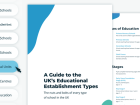State of Selling to Schools 2022 (Part 3)
State of Selling to Schools 2022 (Part 3)
Explore insights into schools’ problems and their priorities for the year ahead.
Explore insights into schools’ problems and their priorities for the year ahead.
Chapter 7 – Fundraising
In 2020, schools told us that charity fundraising would be largely put to one side to focus on COVID recovery and deal with any guidelines that prevented fundraising events. While that was certainly the case, it didn’t stop schools completely from doing their bit for some great causes in 2021.
How far in advance would your establishment typically make the decision on the charity/charities that it will fundraise for during your next fundraising event(s)?
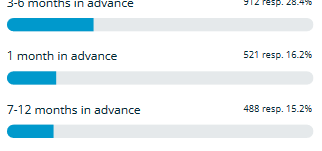
It’s not uncommon for schools to choose charities to support early in the year. This allows them to lock in fundraising event dates ahead of new school terms and avoid any last-minute scheduling. And the stats show exactly that – almost a third of schools (28.4%) need 3-6 months’ notice to choose a charity, with 15.2% needing up to a full year to make their decision.
Surprisingly, a large number of schools said they didn’t know. This could mean several things that charities would do well to look into – perhaps other staff are involved in fundraising events, or they’ve joined the school during the pandemic when fundraisers were off the table. Or, perhaps it means the school decides throughout the year on a more ad-hoc basis, as communications from charities filter through, so it’s crucial charities stay positive and email schools throughout the year.
And all isn’t lost if you’re a charity running a last-minute event. A good 16.2% of schools only need one month to plan an event, which could result in incredible amounts of funds being generated for your charity.
Who is involved in the process of deciding which charity to raise funds for and managing the fundraising events?
To help answer our queries regarding the staff members responsible for charity fundraising, we asked schools, well, exactly that.

Predictably, senior leaders are involved in the management of fundraising events in a significant number (78.3%) of schools, whether that’s alone or with help from other staff members. Incredibly, over half (53%) of all schools get pupils involved in the decision-making – which is greater than that of the teaching staff.
If you’re a charity, there’s a good chance you’ve been prioritising Senior Leaders all along with your email communications. But how much of your communications and events have been pupil-oriented?
Although Senior Leaders will still have a significant say on the final decision, some schools may let pupils shortlist or even cast the final vote of which events to support and how to run them.
So, it’s vital your emails, landing pages, and any other event marketing materials get across how fun and exciting the events are to win the youth vote, and don’t solely focus on the ‘grown-up stuff’!
Chapter 8 – Goals and priorities for 2022
What are your school’s top priorities for 2022?

Last year, 67.9% stated that supporting emotional and mental wellbeing was their top priority. This year it’s second on the list at 58%. It’s still an area of major concern for teachers and school staff. Since the first lockdown, various charities, schools, and parents have been speaking out about their concern for child mental health with experts warning of a looming mental health crisis due to COVID-19.
The isolation of remote learning and changes to pupils’ routine during the pandemic has had a huge impact on wellbeing. At home, there may also be a variety of reasons for a decline in children’s mental health, as whole families are under increased employment and financial pressure. Children are also experiencing bereavement at an increased rate.
However, the wellbeing of school staff is also under pressure, so Senior Leaders have a difficult balancing act on their hands to support both school staff and pupils.
The biggest difference in priorities identified from our most recent survey results has been the increased desire to improve attainment and results, with 65.3% prioritising this, up from 61.8% last year.
Last year, reducing learning loss and the attainment gap came just ahead of improving attainment and results, which suggested that teachers were less concerned with hitting attainment criteria, specifically for tests and exams, and were simply trying to ensure that pupils did not fall too far behind – a more pupil-focused objective.
The shift in priorities this year towards attainment and results mirrors the government’s focus on getting learning back to normal, the return of full Ofsted inspections, and the expectation that exams will take place as normal in 2022.
Improving SEN support is a priority for 25.2%, up from 21.5%. Providing adequate support for SEN pupils has been a massive challenge throughout the pandemic as SEN pupils generally require far more one-to-one, in-person support.
At the start of the autumn 2020 term, as pupils returned to the classroom, the government published data confirming that SEN pupils were less likely to return to school due to concerns about the spread of the virus.
The government’s data showed that 81% of children in England with Education, Health and Care Plans (EHCPs) at state-funded schools were in attendance on 24 September 2020, compared with 88% of all children.
Unsurprisingly, improving SEN provision is a priority, given that the ongoing pandemic has so dramatically impacted these pupils’ learning and lives.
Only 10% of respondents surveyed said they were making updating technology a priority for the year ahead. This may be because they already had to make this a far greater priority over the last two years to deliver extended periods of remote learning, and schools feel they are now up to date in this area.
Which of the following do you feel could best help you achieve your goals in 2022?
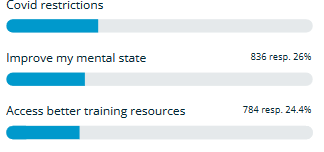
Reducing paperwork received the highest response with 58.7% of surveyed teachers and school staff saying this is would help them achieve their goals in 2022. More budget to spend follows closely behind with 49.1%.
Last year, COVID-19 restrictions featured at the top of the list with 60.2%, with the reduction of paperwork behind with 45.4%.
Reducing teacher workload has been on the government’s priority list for many years. It was an important part of the DfE’s teacher recruitment and retention strategy, published in January 2019.
While some gains may have been made since then, obviously the COVID-19 pandemic has had a considerable impact on workload, with teachers reporting in an earlier survey question that their stress levels increased significantly during 2020.
What types of products and services will provide the most value to your school in 2022?
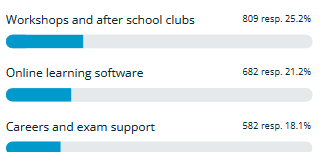
There are big changes in the products and services that teachers and school staff are most interested in for 2022, indicating that teachers are hoping for a more normal year ahead.
Curriculum-related resources (57%), education trips and travel (48.5%), teacher training and CPD (45.7%), and SEN, safeguarding, and wellbeing support (41.3%) are the top priorities.
This marks a significant change from last year’s results when ICT equipment (56.7%) and online learning software (49.2%) were the products and services that schools believed would be of most value to their school in 2021.
With 57% of teachers surveyed saying that curriculum-related resources will provide value for their school this year, there are huge opportunities for businesses who offer ready-to-use, quality resources that will save teachers’ time and help them reduce the learning gap exacerbated by COVID-19.
It’s good news too for providers of education trips and travel (48.5%), up from 17.2%.
Providers of education trips and travel have suffered so much during the pandemic. It’s good to see that the benefits of these activities have not been forgotten, and respondents expect trips and travel to provide the most value to them in the year ahead.
Another swing in opinion is related to COVID-19 safeguarding and PPE equipment, with just 5.9% stating it will provide the most value to them in the year ahead, crashing from 37.2% last year. Results for SEN, safeguarding, and wellbeing support (41.3% remained consistent with last year’s results (40.3%).
How can education businesses support and serve schools in 2022?

Next, we decided to ask them how businesses can help solve their problems, so you can tailor your marketing messages accordingly for the year ahead.
At the top of the list are free resources and advice. This is the quickest way to attract a teacher’s attention. Offering free resources in exchange for their email address asks for very little commitment from teachers. The majority of teachers will also expect to give their email address for quality free resources, which allows you to build your qualified leads, contact them again, and build a relationship.
However, any free resource should be the same quality as a paid-for resource. Free resources are an opportunity to showcase the real value of your paid-for product or service, so they have to make the right impression. Sharing poor quality resources as freebies could do more harm than good in the long term. First impressions count!
Of course, not all businesses can offer free resources or advice. If that’s you, then perhaps consider offering reduced prices or discounts. If that’s not always possible, payment plans that help schools spread the cost of products or services are listed as the second-best way businesses can support schools (54.1%). This can be particularly useful for schools around the end of the financial year when they are often looking to spend leftover budget (to avoid local authorities clawing back surplus) and planning any major spending for the year ahead.
Improving incentives and rewards for schools is next on the list, with 49.2% of schools saying they’d be a great way for businesses like you to support them. This could include discounts or deals for long-term customers, but more specifically rewards such as free items with their order, free months on their subscription, or even a referral programme that could generate the school some extra funds. There’s a lot you could do here, so work out what your company can do – anything that’ll save teachers time or money, or just give them something to look forward to – and get promoting! Schools also desire better training, free demos, and online webinars. If you have important knowledge to share that would be of value to schools, offer a tailored, one-to-one demo to show them exactly how your product or service can work in their setting.
Putting in a calendar appointment in advance of a one-to-one demo can be daunting for teachers when their time is stretched, so it’s important to communicate the benefits of a product or service before expecting a large number of teachers to make that time commitment.
Alternatively, offer a webinar rather than bespoke one-to-one advice to individuals. It requires less commitment from teachers – not every teacher who registers for a webinar will attend, but it offers a great opportunity to build trust in your product and service and position yourself as an expert in your field.
At the opposite end of the scale, only 8.6% of respondents selected consultation. With more and more companies opting for the friendly, personable approach, something as formal as a consultation might not seem as appealing now. But that doesn’t mean you have to change your entire marketing plan. With a bit of a shift in purpose and content, a consultation can easily become a free demo or webinar, which is much more favourable with teaching staff.
More video content about the product/service is another surprising result with just 19.2% of respondents saying this would be a good way to support schools.
Although marketing experts regularly cite video content as the best way to engage an audience, this survey reinforces what we (at Sprint Education) have noted before about education audiences. Teachers are usually so busy they want to navigate to the information they are interested in as quickly as possible. Video content can often be a slow way for them to access that information.
There’s no doubt that the pandemic has presented challenges for many education-focused businesses, but we hope the survey results in this chapter point towards a brighter future for many. Schools are still here, and they’re still looking for solutions. If you can tailor your marketing and make it crystal clear how you can help them achieve their priorities for 2022, schools will see your value.
What next?
We know from the responses regarding teachers’ priorities for the year ahead, there are huge opportunities available to education businesses who choose to pursue them.
As 91.4% of teachers surveyed said that email was the method of communication from education businesses they were most likely to reply/react to, email marketing should be forming a key part of your strategy.
If you’re not sure where to start and would like some advice, drop us a line.
We can manage every aspect of your next email campaign with our managed strategies plan, share our secrets about combining email and social media to great effect, and let you know all about how we’ve revolutionised edu-marketing with Campus.
What is Campus, you ask?
Campus is where all of your future education customers live!
You'll never need to search for teacher email addresses or school data again because Campus has all the data you'll ever need built-in and updated on a minute-by-minute basis.
Plus, its integrated email marketing tools, selling to schools features, and education insights module will give you the power to deliver edu-marketing direct to your target education audience, generate more leads, and empower you to sell more to schools.
Essentially… it’s a total solution for any education business!
We look forward to hearing from you.
Tags
Education News
How to Sell to Schools
How to Sell to Teachers
Selling to Schools
Selling to Teachers
Similar Articles
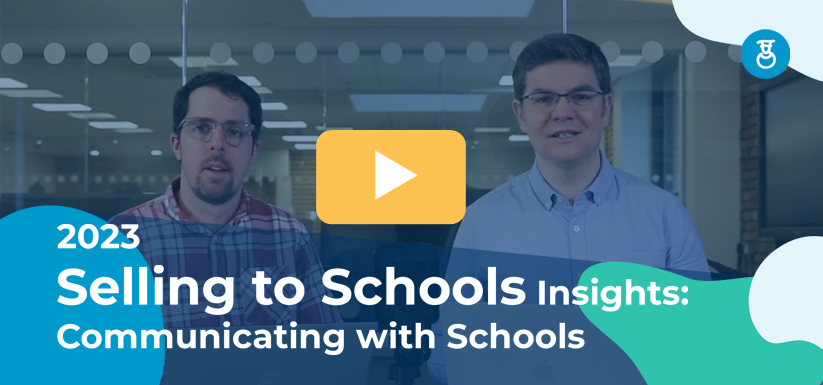

VIDEO: Selling to Schools Insights - Chapter 2 - Communicating with Schools
We analyse chapter 2 of The State of Selling to Schools 2023, discover how emails compare to social media and postal marketing, how often each is viewed and what leads to the most positive teacher responses.
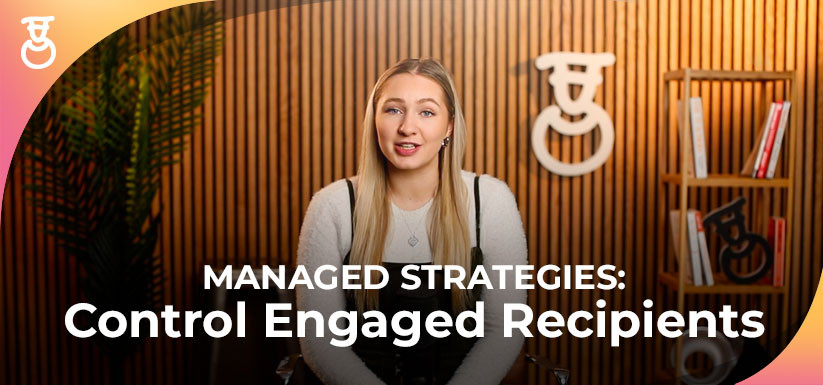

Following Up On Hot Prospects - Your Engaged Recipients
Target the educators and education staff that matter to your selling-to-schools email campaigns


Expert marketing to schools support and solutions
Expert marketing to schools solutions
Email Head Teachers, Teachers, and Staff Inboxes
Email teachers and staff inboxes
Sell More to UK and Global Schools and Colleges
Sell more to schools and colleges






























